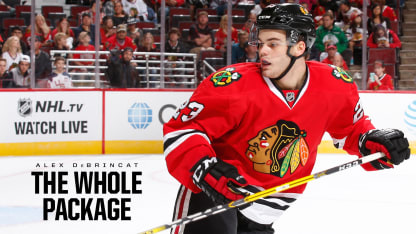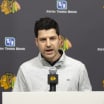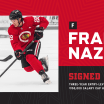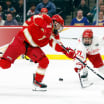The following is excerpted from the October 2016 issue of Blackhawks Magazine, featuring Patrick Kane. Pick up a copy at the next Blackhawks home game, or by calling the Blackhawks Store at 312-759-0079.
Here's something you already know about Alex DeBrincat: He's always been small. His 5-foot-7 frame is understandably the first thing people notice about him, and sometimes it's the only thing people notice about him.
Like all of those scouts from the Ontario Hockey League who wrote him off as a 15-year-old playing in Michigan, then as a 16-year-old playing for Lake Forest Academy just outside Chicago. Or the 25 National Hockey League clubs that announced their selections-some of them twice!-at the 2016 draft in Buffalo before Chicago made their first pick of the weekend at No. 39.
Blackhawks Magazine Excerpt: The Whole Package



















